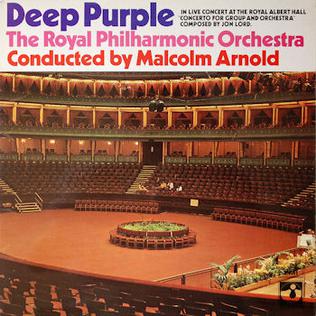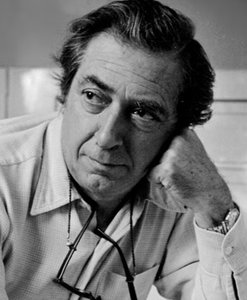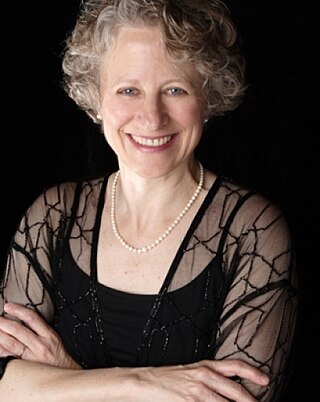Related Research Articles

Charles Edward Ives was an American actuary, businessman, and modernist composer. Ives was amongst the earliest American internationally renowned composers to achieve recognition on a global scale. His music was largely ignored during his early career, and many of his works went unperformed for many years. Later in life, the quality of his music was publicly recognized through the efforts of contemporaries like Henry Cowell and Lou Harrison, and he came to be regarded as an "American original". He was also among the first composers to engage in a systematic program of experimental music, with musical techniques including polytonality, polyrhythm, tone clusters, aleatory elements, and quarter tones. His experimentation foreshadowed many musical innovations that were later more widely adopted during the 20th century. Hence, he is often regarded as the leading American composer of art music of the 20th century.

Concerto for Group and Orchestra is a live album by Deep Purple and the Royal Philharmonic Orchestra conducted by Malcolm Arnold, recorded at the Royal Albert Hall, London, in September 1969. It consists of a concerto composed by Jon Lord, with lyrics written by Ian Gillan. This is the first full length album to feature Ian Gillan on vocals and Roger Glover on bass. It was released on vinyl in December 1969. The original performance included three additional Deep Purple songs, "Hush", "Wring That Neck", and "Child in Time"; these were included on a 2002 release. This was the last Deep Purple album distributed in the US by Tetragrammaton Records, which went defunct shortly after.

Norman Dello Joio was an American composer active for over half a century. He won a Pulitzer Prize in 1957.

The Three Places in New England is a composition for orchestra in three movements by American composer Charles Ives. It was written mainly between 1911 and 1914, but with sketches dating as far back as 1903 and last revisions made in 1929. The work is celebrated for its use of musical quotation and paraphrasing.
William James Mathias CBE was a Welsh composer noted for choral works.

A Sea Symphony is an hour-long work for soprano, baritone, chorus and large orchestra written by Ralph Vaughan Williams between 1903 and 1909. The first and longest of his nine symphonies, it was first performed at the Leeds Festival in 1910 with the composer conducting, and its maturity belies the relatively young age – 30 – when he began sketching it. Moreover it is one of the first symphonies in which a chorus is used throughout as an integral part of the texture and it helped set the stage for a new era of symphonic and choral music in Britain during the first half of the 20th century. It was never numbered.
String Quartet No. 1 is a musical composition by Charles Ives. Music historian and theorist Robert P. Morgan wrote that the quartet "was Ives's first mature composition of extended length, and its extraordinary fluency gives ample evidence of his solid control of traditional musical techniques. Moreover, the work is considerably more than a facile exercise based on classical models; there are already indications of the Ives to come, in the extensive quotations and, above all, in the composer's ability to bend the form to suit the idiosyncrasies of his own musical inclinations."

Charles Ives's Symphony No. 4, S. 4 was written between 1910 and the mid-1920s. The symphony is notable for its multilayered complexity—typically requiring two conductors in performance—and for its large and varied orchestration. Combining elements and techniques of Ives's previous compositional work, this has been called "one of his most definitive works"; Ives' biographer, Jan Swafford, has called it "Ives's climactic masterpiece".

"Dear Lord and Father of Mankind" is a hymn with words taken from a longer poem, "The Brewing of Soma" by American Quaker poet John Greenleaf Whittier. The adaptation was made by Garrett Horder in his 1884 Congregational Hymns.

Melinda O'Neal is a conductor of choral and choral-orchestral music, professor emerita of music, and author.

A Symphony: New England Holidays, also known as A New England Holiday Symphony or simply a Holiday Symphony, is a composition for orchestra written by Charles Ives. It took Ives from 1897 to 1913 to complete all four movements. The four movements in order are:
William Brocklesby Wordsworth was an English composer. His works, which number over 100, were tonal and romantic in style in the widest sense and include eight symphonies and six string quartets.

Ina Boyle was an Irish composer. Her compositions encompass a broad spectrum of genres and include choral, chamber and orchestral works as well as opera, ballet and vocal music. While a number of her works, including The Magic Harp (1919), Colin Clout (1921), Gaelic Hymns (1923–24), Glencree (1924-27) and Wildgeese (1942), received acknowledgement and first performances, the majority of her compositions remained unpublished and unperformed during her lifetime.

Jack Gallagher is an American composer and college professor. His compositions include orchestral, chamber, piano and choral works. He has written two symphonies, which have both been recorded.
My Father Knew Charles Ives is an orchestral triptych by the American composer John Adams. The work was commissioned by the San Francisco Symphony. It was first performed by the San Francisco Symphony under the direction of Michael Tilson Thomas at the Louise M. Davies Symphony Hall on April 30, 2003.

Tommy is a 1972 album by the London Symphony Orchestra and English Chamber Choir, conducted and directed by David Measham, performing arrangements by Wil Malone of The Who's 1969 album Tommy with additional arrangements by James Sullivan. The project was conceived and produced by Lou Reizner, initially with Rod Stewart singing Roger Daltrey's main role. As Pete Townshend and Daltrey became more involved, Stewart's role was reduced to singing "Pinball Wizard".

"Hymn: Largo cantabile", S. 84/1, sometimes also referred to as "Largo cantabile: Hymn" and often shortened as "Hymn", is a composition by American composer Charles Ives written in 1904. Grouped in the suite A Set of Three Short Pieces, it is published and commonly performed as a standalone work.